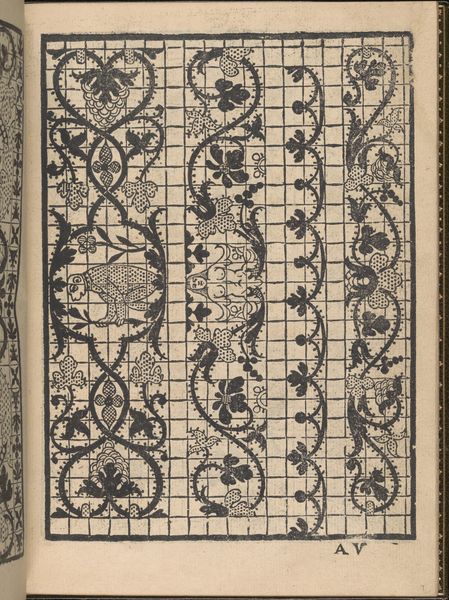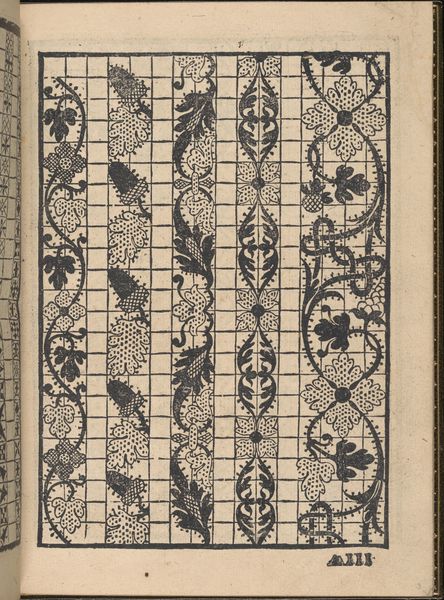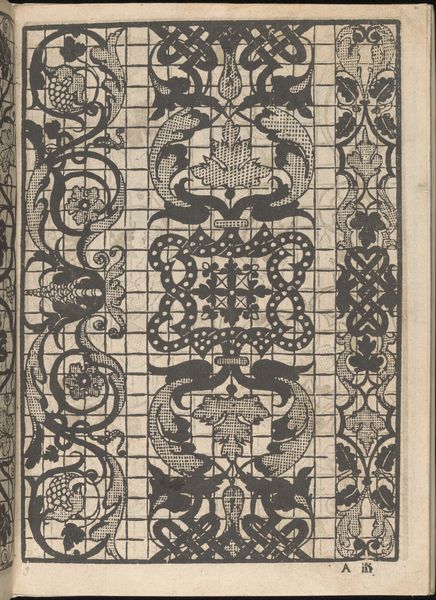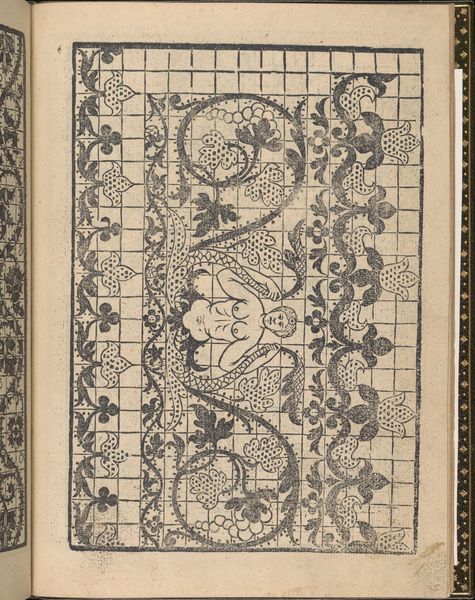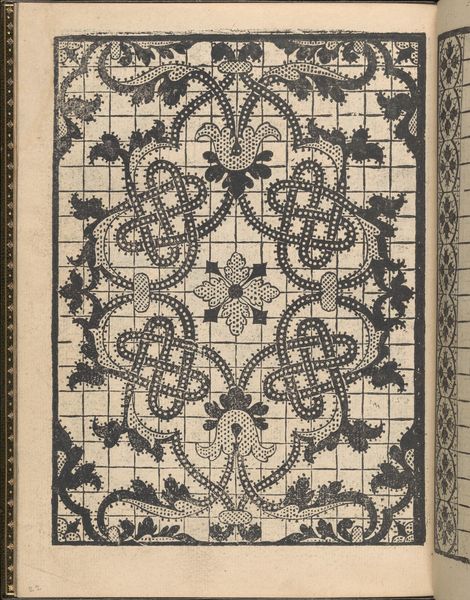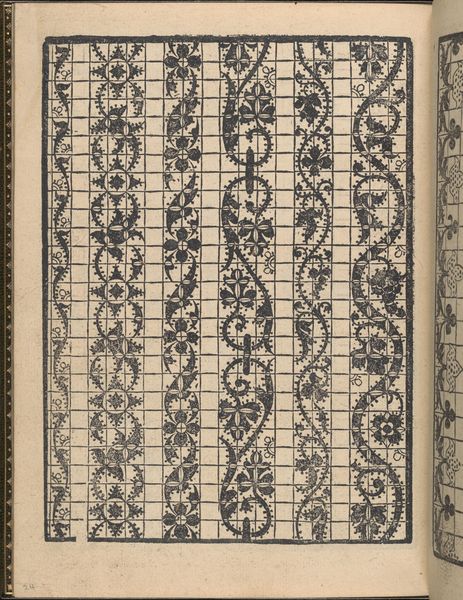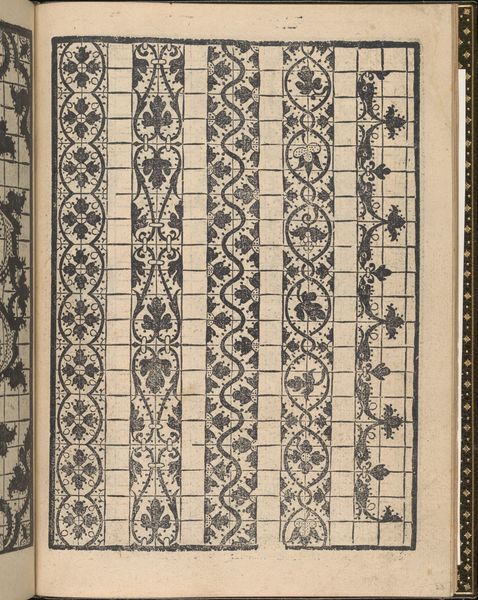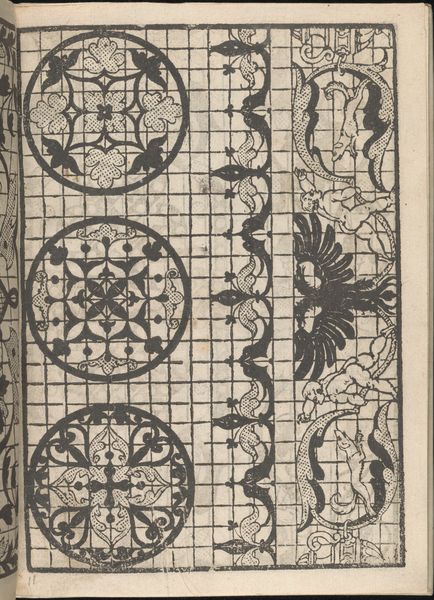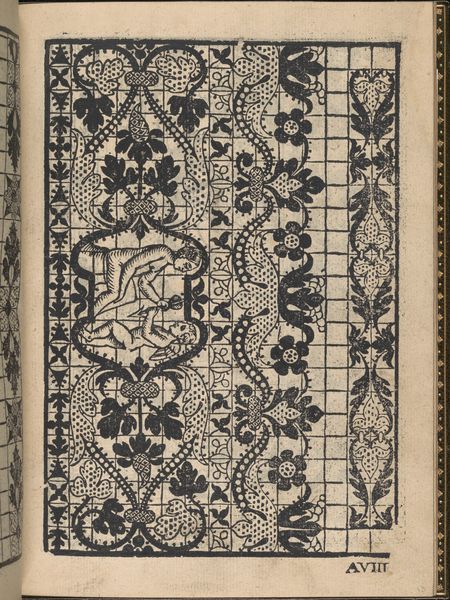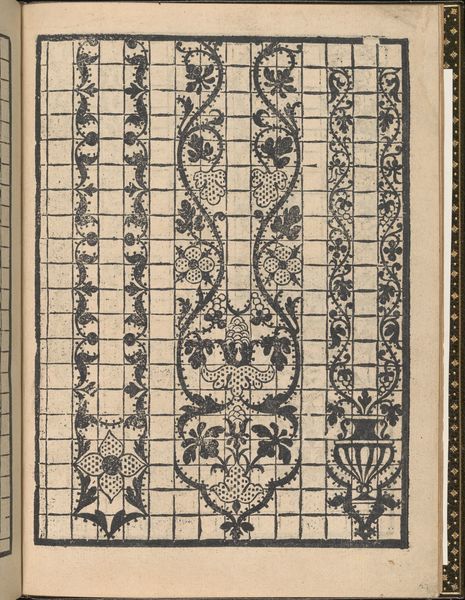
La Gloria et l'Honore di Ponti Tagliati, E Ponti in Aere, page 6 (verso) 1556
0:00
0:00
drawing, print, ink
#
drawing
# print
#
ink
#
geometric
#
decorative-art
Dimensions: Overall: 8 1/4 x 6 1/8 in. (21 x 15.5 cm)
Copyright: Public Domain
Editor: We are looking at "La Gloria et l'Honore di Ponti Tagliati, E Ponti in Aere, page 6 (verso)" created in 1556 by Matteo Pagano, using ink in a drawing and print format. The grid-like design really catches my eye – it's almost mathematical but softened with those organic floral shapes. What formal elements stand out to you in this piece? Curator: The very grid you noted establishes a powerful structural framework. Consider how Pagano leverages it: not as mere support, but as an active component that interplays with the decorative motifs. Observe the distribution of the dark ink; its concentration emphasizes the negative space, the "Ponti Tagliati" themselves. The eye is led to decipher patterns not only within each module but also in their cumulative effect. Editor: So, the relationships between the shapes are more important than the individual forms themselves? Curator: Precisely. The individual floral and geometric shapes are, in essence, modules. The artist seems most concerned with their orchestration across the picture plane and within this self-imposed architecture. What do you observe about the textures achieved with the ink? Editor: I see a lot of varied textures achieved with hatching and stippling. How do you think those techniques influence the perception of form? Curator: These techniques, though seemingly simple, provide layers of visual information that go beyond simple contours. Note how they alter depth and direct our attention to key points where dark and light interact. Do you find that they activate or quieten the underlying geometry? Editor: I think the textures activate the grid, adding complexity and preventing it from being too rigid. It's all so intentionally constructed, isn’t it? I didn't see all this at first glance. Curator: Indeed, a work such as this prompts us to consider how even seemingly decorative pieces rely on sophisticated formal principles. The interplay between order and ornament here allows each to heighten the other.
Comments
No comments
Be the first to comment and join the conversation on the ultimate creative platform.
